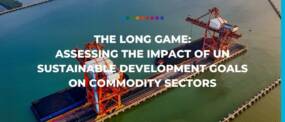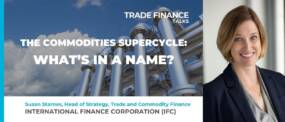Freeports are a special kind of air, rail, or seaport, where normal tax and customs rules don’t apply.
Imported goods, for example, can enter with simplified customs documentation and without paying tariffs.
Businesses operating within a freeport zone can therefore manufacture goods using these imports, thereby adding value to the goods before exporting them – again, without ever having to pay the full customs tariffs or go through the full customs procedures.
Background to UK freeports
The Free Ports Opportunity, authored in November 2016 by Rishi Sunak MP – then a backbencher and now Chancellor of the Exchequer – set out the government’s vision for increasing UK trade.
At the time, Sunak was writing in the aftermath of the Brexit vote in June that year, on the assumption that leaving the European Union (EU) would provide a unique opportunity to revisit customs procedures and other trade policy measures.
The report argued that an extensive and ambitious network of UK freeports would not only provide domestic manufacturers with a wealth of tangible benefits, but would also send a clear message to international markets that Britain’s new global role will be open, innovative, and outward looking.
The report provided indicative figures based on job creation in freeport zones based on US data, which suggested a UK freeport policy could create as many as 86,000 jobs in the UK.
In 2018, Mace Consultancy estimated that “supercharged freeports”, whereby freeports were integrated with enterprise zones, could boost international trade by nearly £12 billion and create 150,000 jobs in the north of England.
In 2019, the Conservative Manifesto committed to reintroducing UK freeports as a high priority, with three main objectives:
- Establish Freeports as national hubs for global trade and investment across the UK, intensifying the economic impact of our ports by enhancing trade and investment and generating increased economic activity across the UK
- Promote regeneration and job creation, creating high-skilled jobs in ports and the areas around them, prioritising some of our most deprived communities to level up the UK economy
- Create hotbeds for innovation, creating dynamic environments, capitalising on new ideas and fostering the conditions that will attract new businesses, investors and innovations
The Freeports Bidding Prospectus was published in November 2020, and marked the opening of the bidding process for freeports in England.
From the original 40 bids received, HM Treasury announced the eight winning locations at the Spring Budget in March 2021, namely:
- Felixstowe and Harwich
- Humber Region
- Liverpool City Region
- Plymouth
- Solent (Southampton)
- Thames
- Teesside
- East Midlands Airport
These successful freeport bidders will benefit from government incentives relating to customs, tax, planning, regeneration, infrastructure, and innovation.
They will also be able to access a share of the £175 million seed capital funding in mid-2022 on the submission and approval of successful business cases.
Map break: Freeport structure and logistics
The diagram below illustrates how a freeport customs site can “move” the border inland as far as customs procedures are concerned, easing the flow of goods.
There are five specific customs benefits to support international trade:
- Duty deferral available while goods are on the freeport site
- Duty inversion available where the tariff on the finished goods is lower than on the component parts
- Duty exemption where goods are imported into a freeport for processing and subsequently re-exported
- Suspension of import VAT
- Simplified import procedures
Beyond direct support for import and export activities, freeports will become special economic areas where a broader range of general tax relief will be available for businesses.
Those measures will include the following:
- Enhanced capital allowances – Companies in freeport zones that invest in qualifying plant and machinery will be able to offset the cost against any taxable profits in the first year. That gives them an immediate increase in post-tax profit and helps improve cash-flow. With the abolition of the original enhanced capital allowances scheme, it provides a replacement in freeports and an added incentive for businesses to invest.
- Enhanced structures and buildings allowances – Capital spent on renovating non-residential buildings and structures will attract an annual 10% relief against taxable profits spread over 10 years. This is much better than the relief currently available nationwide, which is set at 3% p.a. over 33 and a third years. The new relief will be available on defined expenditure, providing building contracts are signed and the qualifying assets are brought into use between 1 April 2021 and 30 September 2026.
- Employer National Insurance (NI) contributions rates relief – Freeport employers won’t have to pay any employer NI contributions on their staff salaries, provided these employees spend 60% or more of their working hours in the freeport.
- Business rates relief – Up to 100% relief on business rates will be available on certain business premises in freeports. Local authorities will be given the power to set the details of this scheme in their own freeports.
- Stamp duty land tax relief – For purchases of land and buildings within a freeport tax site, subject to a ‘control period’ of up to three years, and the land being acquired and used in a ‘qualifying manner’.
Freeport aims and objectives
The first objective is clear: to establish freeports as national trade hubs and play an ever-increasing role in accelerating the UK’s international trade and investment strategies.
Additionally, the government has also said that freeports will be significant “in boosting international trade, attracting inward investment and driving productivity across the UK”.
All freeports will be targeting industries and sectors that are driving the development of advanced logistics, manufacturing, and research and development activities that will exploit the region’s existing strengths and trading partners.
In Liverpool City Region Freeport, for example, the key target market sectors have been identified as:
- Aerospace, maritime, energy and automotive – Building on the existing key prime manufactures in the region, with a specific focus on the transition to electric vehicles and low-carbon energy production, including hydrogen and offshore wind projects.
- Bio manufacturing and chemicals – Building on key prime manufactures with a focus on pandemic resilience, vaccine supply chain, and advanced chemicals manufacturing.
- Food and drink and fast-moving consumer goods (FMCG) – Focusing on packaging and population-centric logistics.
Investment begets investment
The accumulation of the freeport focus in the above areas is expected to drive significant demand for professional services, international trade finance, and create upstream clusters in associated sectors and supply chains across Liverpool City Region.
Since the announcement of the freeport, discussions have progressed with a range of global ports and manufacturers looking to invest in the region.
A key focus of all freeports will be to target high-value, high-tariff markets and partner countries who will find the customs and tax measures of most interest.
The eight English freeports are currently preparing to launch in early 2022, and it is expected that the devolved administrations will follow in 2023.
If the initial rollout proves successful, it is expected that the government will look to undertake further bidding rounds to extend the benefits to more UK ports.
A testament to their success so far is that many of the English freeports report being inundated by interested developers and businesses even before their launch.
This bodes well for the planned levelling up of the UK economy by boosting jobs, trade, and regional investment.
Read our latest issue of Trade Finance Talks, Spring 2022

 Australia
Australia Hong Kong
Hong Kong Japan
Japan Singapore
Singapore United Arab Emirates
United Arab Emirates United States
United States France
France Germany
Germany Ireland
Ireland Netherlands
Netherlands United Kingdom
United Kingdom


























Comments are closed.